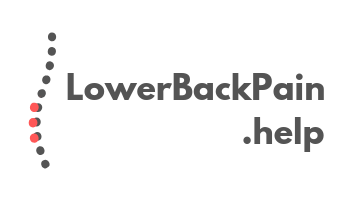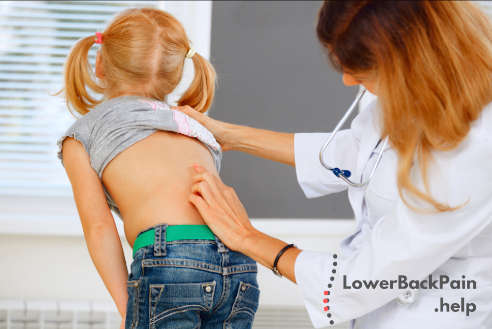Table of Contents
If you are experiencing symptoms of a curved spine, you may be suffering from scoliosis.
But what’s scoliosis exactly?
It’s a spinal disorder, where the spine is curved to one side.
The curve is generally shaped like a “C” or an “S”.
Most cases of scoliosis have no known cause, although it’s sometimes caused by genetic factors.
Depending on how severe the curve is, the disorder can be painful, or it may not cause any problems. But it doesn’t have to be painful. Many people have a mild form of scoliosis and never experience pain.
In these milder cases, doctors will usually monitor the curvature to make sure it isn’t getting worse.
But in more extreme cases, you might need to get medical treatment.
- Nonstructural curves happen to people with a normal spinal structure and are generally temporary. For patients with nonstructural curves, your doctor will try to identify the cause and fix the issue.
- Structural curves occur when a person’s spine has a fixed curve. Structural curves can be caused by a variety of factors, and oftentimes the cause is not even known.
Causes of Scoliosis
As I said, for most patients, the cause of scoliosis is unknown.
This type of scoliosis is then called “idiopathic scoliosis”, and usually arises in the early years – between the ages of 10 and 12.
However, there are many cases where the cause of scoliosis is known.
Here are the most common factors:
- Genetic factors. There are several genes that are known to cause scoliosis. A surprisingly high percentage of people with genetic scoliosis have a relative with the same condition.
- Congenital scoliosis. In these cases, a person is born with their spine already curved. This is a relatively rare condition.
- Bad posture or injuries. Frequent slouching when sitting, carrying heavy backpacks, and sports injuries have been known to cause scoliosis – often rather mild, though.
- Leg length. If one of your legs is longer than the other, your spine may curve (over a longer period of time) to compensate.
- Neuromuscular scoliosis. Conditions such as muscular dystrophy, cerebral palsy, and poliomyelitis can cause a person to develop scoliosis.
- Degenerative diseases like osteoporosis, neurofibromatosis, and Marfan’s syndrome can cause scoliosis in some individuals.
Symptoms of Scoliosis
So, how do you know if you or a loved one is suffering from scoliosis?
The only way to know for sure is to see a doctor.
That said, there are several telltale symptoms to watch out for.
These include:
- Consistently leaning to one side or the other
- One shoulder or shoulder blade is noticeably higher than the other
- One hip protrudes more than the other
- The head is not entirely centered
- The chest or rib cage is asymmetrical
- Clothes hang improperly, to one side or the other
- Painful menstruation
- Constipation (caused by the spine pressing on the stomach and intestines)
- Neck, shoulder, or back pain, particularly in the lower back
- Limited mobility due to back pain (only in severe cases)
- Breathing or heart trouble (only in severe cases)
As you can see, pain and serious symptoms are only found in the most severe cases.
But don’t take this lightly: if scoliosis is left untreated, these symptoms can often appear later in life.
Because of this, it’s important to get regular checkups to monitor the progress of the disorder.
Spotting scoliosis in infants is a bit harder sometimes.
But these are the typical signs to watch out for:
- Always curving to the same side while lying down
- A bulge on one side of the abdomen or chest.
- Shortness of breath (only in severe cases)
Testing for Scoliosis
If you experience any of these symptoms, the next step is to make an appointment with your doctor.
She will most likely ask you some questions and look at your medical history to see if there are any possible causes.
Some physical examination of your spine, ribs, shoulders, and hips will be performed as well.
If your doctor thinks you have scoliosis, they will most likely refer you to an orthopedist.
The orthopedist will use a tool called an inclinometer to measure the exact degree of spinal curvature.
Depending on the nature of the curve, they may also order an X-ray, CT scan, or MRI.
Treating Scoliosis
After the examination, your doctor may prescribe a variety of treatments, which can include:
- For mild curves, especially in adolescents, the doctor will monitor the curvature to see if it’s improving on its own or getting worse. Many times no other treatment is needed.
- Exercise and physical therapy. There are some exercises that can help correct spinal curvature. The exact exercise will depend on how your spine is shaped. However, all of them will revolve around spine, rib, shoulder, and hip alignment.
- For moderate curvature, a doctor may prescribe a brace. The brace isn’t a cure, but it’s designed to prevent the curve from getting any worse. Braces must be customized for your body, as well as for the exact nature of the curve. Generally, the brace is supposed to be worn for a certain number of hours each day.
- Because spinal surgery is inherently risky, this is the most extreme option and is used for the worst cases of scoliosis. Surgery can involve inserting a metal rod to keep your spine straight. It might also involve fusing two or more vertebrae together. If your doctor recommends surgery, make sure to speak with a specialist about the benefits as well as the risks.
- Casting is an alternative to bracing and is sometimes used to treat scoliosis in infants. The infant is wrapped in a plaster cast that’s designed to correct the shape of the spine. Because infants grow quickly, the cast will need to be changed on a regular basis.
- Chiropractic treatment. Despite a lot of “alternative medicine” hype to the contrary, chiropractic treatment is not a cure for scoliosis, and will not correct spinal curvature. However, it can be helpful for alleviating pain or discomfort.

